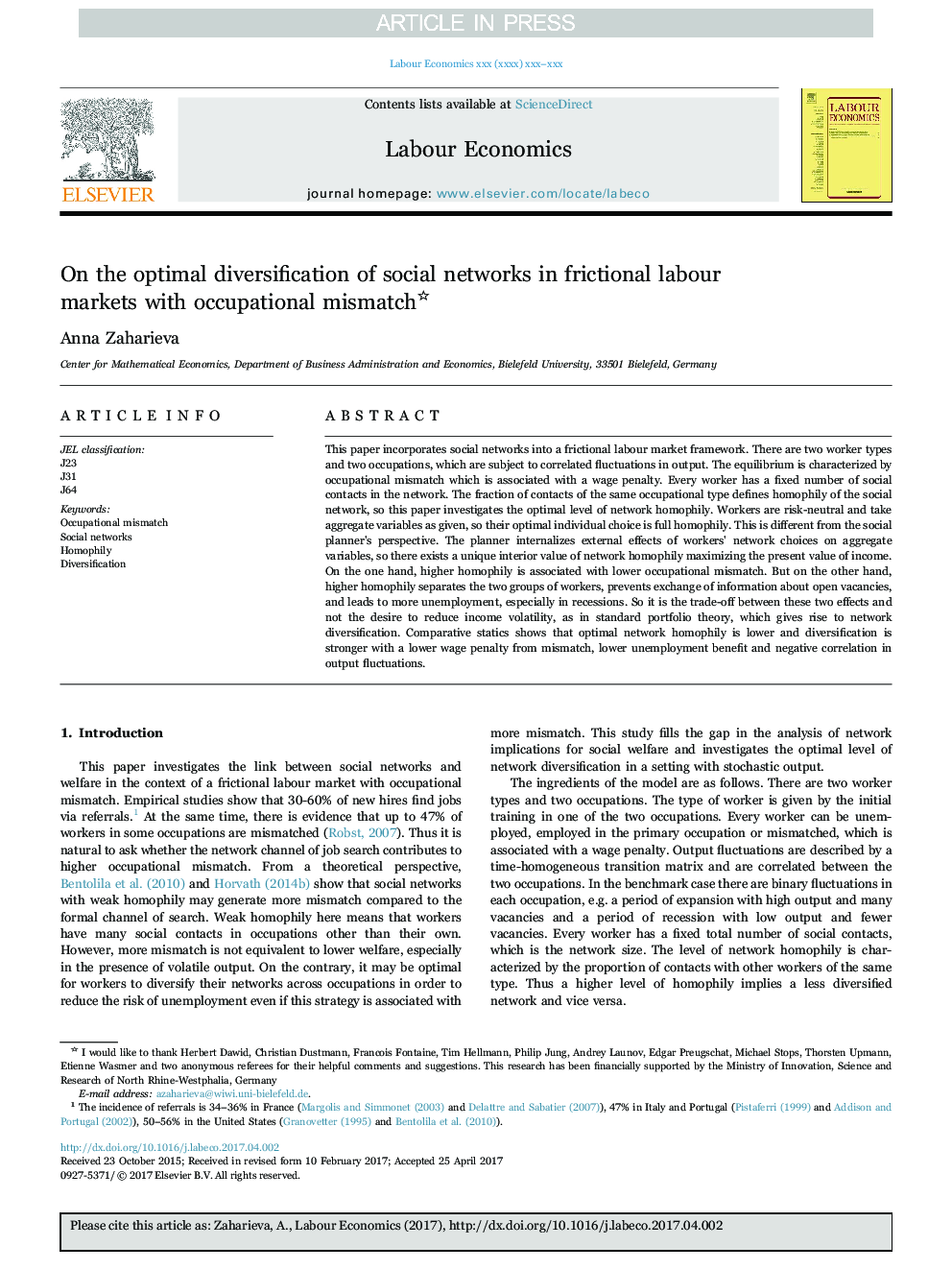| کد مقاله | کد نشریه | سال انتشار | مقاله انگلیسی | نسخه تمام متن |
|---|---|---|---|---|
| 7371423 | 1479687 | 2018 | 16 صفحه PDF | دانلود رایگان |
عنوان انگلیسی مقاله ISI
On the optimal diversification of social networks in frictional labour markets with occupational mismatch
ترجمه فارسی عنوان
در مورد بهینه سازی بهینه شبکه های اجتماعی در بازار کار اصطکاکی با عدم هماهنگی شغلی
دانلود مقاله + سفارش ترجمه
دانلود مقاله ISI انگلیسی
رایگان برای ایرانیان
کلمات کلیدی
موضوعات مرتبط
علوم انسانی و اجتماعی
اقتصاد، اقتصادسنجی و امور مالی
اقتصاد و اقتصادسنجی
چکیده انگلیسی
This paper incorporates social networks into a frictional labour market framework. There are two worker types and two occupations, which are subject to correlated fluctuations in output. The equilibrium is characterized by occupational mismatch which is associated with a wage penalty. Every worker has a fixed number of social contacts in the network. The fraction of contacts of the same occupational type defines homophily of the social network, so this paper investigates the optimal level of network homophily. Workers are risk-neutral and take aggregate variables as given, so their optimal individual choice is full homophily. This is different from the social planner's perspective. The planner internalizes external effects of workers' network choices on aggregate variables, so there exists a unique interior value of network homophily maximizing the present value of income. On the one hand, higher homophily is associated with lower occupational mismatch. But on the other hand, higher homophily separates the two groups of workers, prevents exchange of information about open vacancies, and leads to more unemployment, especially in recessions. So it is the trade-off between these two effects and not the desire to reduce income volatility, as in standard portfolio theory, which gives rise to network diversification. Comparative statics shows that optimal network homophily is lower and diversification is stronger with a lower wage penalty from mismatch, lower unemployment benefit and negative correlation in output fluctuations.
ناشر
Database: Elsevier - ScienceDirect (ساینس دایرکت)
Journal: Labour Economics - Volume 50, March 2018, Pages 112-127
Journal: Labour Economics - Volume 50, March 2018, Pages 112-127
نویسندگان
Anna Zaharieva,
